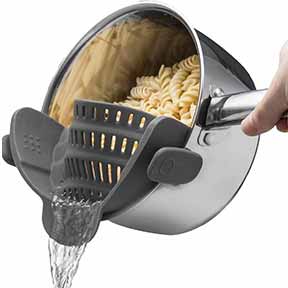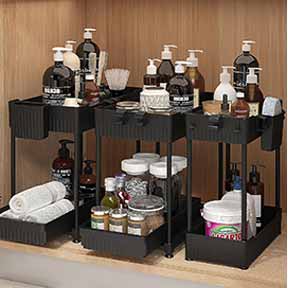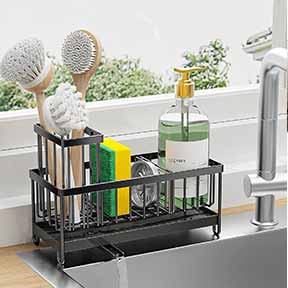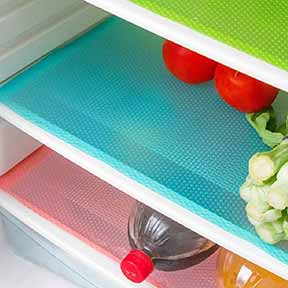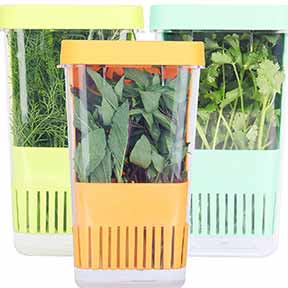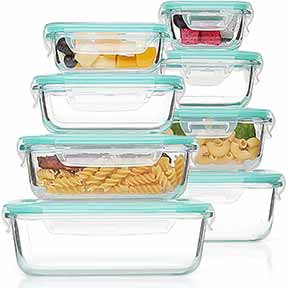Refrigerator and Freezer Cleaning Tips
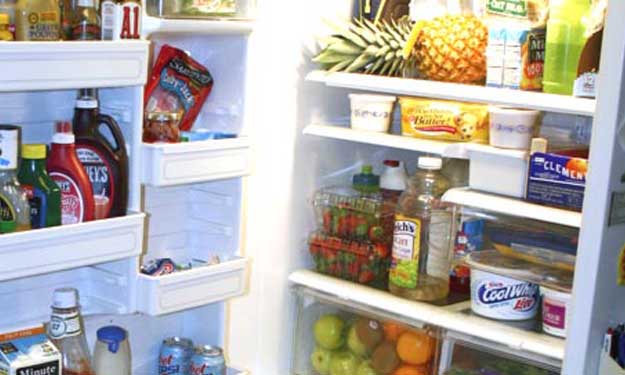
How to Get Your Refrigerator Squeaky Clean.
How to Completely Clean Your Refrigerator and Freezer
In my opinion, cleaning the refrigerator ranks right up there with cleaning the toilet. Unless you are a neat freak or in the habit of keeping spills wiped up, leftovers and wilted produce tossed out – the refrigerator can sometimes be one of the dirtiest, most bacteria-ridden places in your home. The recommended temperature for most refrigerators is 40 degrees, but even at that temperature, bacteria and mold thrives. If you’ve ever re-opened a package of cream cheese and found it covered in green mold, you know exactly what I mean. Besides being an unhealthy environment it’s embarrassing when guests are over and help themselves to cream for their coffee or lend a hand in helping you set the table and they open the door of the refrigerator and find it looking like a total garbage dump. It stinks … it looks bad … and you look ….uncomfortable. Oh my poor dear. If this has happened to you, you need some tips on cleaning your refrigerator. You’ve come to the right place and and I’ve got em right here!Going Through the Stuff in the Fridge
First thing first. Empty out the fridge, throw out the bad and put the stuff you’re going to put back in the refrigerator in a plastic container and put the lid on to keep it cold. You can even put a couple baggie fulls of ice in the container or ice packs in to keep it colder longer. Don’t forget to check the use-by dates. Discard the old and anything else you think is a little “iffy”. Now is also a good time to take a good look at those leftovers.Make a Squeaky Clean Cleaning Solution
These recipes will remove mold and mildew and odors. Bleach will liquefy it, but it’s a much harsher chemical, and it shouldn’t really be necessary unless you have a real emergency like dried blood from old meat, etc. No matter what the solution is that you choose to use, make sure to rinse with plain water and dry thoroughly.Regular Cleaning Solutions
This is a one-two punch for cleaning and removing odors from the refrigerator. Vinegar is a deodorizer, it’s acidic and helps cut through grease and dirt.- 1/2 cup vinegar
- 1 quart of warm water
Heavy Duty Cleaning Solution
If there’s something really disgusting going on, you can crank it up a bit by cleaning it with a solution of:- 1/2 cup bleach
- 1 quart of warm water
- 2 tsp non ammonia liquid laundry detergent
Caution – Do not mix Bleach and Vinegar
Don’t mix vinegar and bleach. Chlorine bleach can produce toxic vapors when other chemicals are added to it- a couple examples to avoid are ammonia and acids like vinegar. I usually try to avoid bleach altogether because of this, but just be sure to safe side and don’t try to get creative and add anything else to your solution.Cleaning the Racks, Shelves and Drawers
1. Carefully remove all of the shelves, racks, drawers and supports and put them in your bathtub. You can also use the sink and wash them one at a time. 2. Spray them with the vinegar and water cleaner. 3. If necessary, let the cleaner sit for a while to make cleaning easier. 4. Give them a good scrubbing with a household sponge that has a scrubber side to remove all spills and surface junk. 5. Rinse well with clear warm water and allow to drain. 6. Then dry thoroughly with a clean, soft absorbent, lint-free cloth or paper towel.Cleaning Inside the Refrigerator
- Use a kitchen sponge soaked in the cleaning solution you have selected to scrub down the interior, from top to bottom.
- Allow debris to collect at the bottom, then sponge up the excess cleaning liquid and bits of food using paper towels and throw it in the trash.
- After the interior is cleaned to your satisfaction, use a small but firm brush (like a toothbrush) to reach into the crevices in the gaskets, around screws and support hardware, and other irregular surfaces.
Rinse and Dry the Inside
Bleach is highly alkaline, vinegar is acidic and both can and will damage the soft plastic or gaskets and make them brittle and disintegrate over time.- In all cases, you will need to go over the insides with fresh clean water to rinse the solution off your gaskets and the plastic.
- Dry the inside thoroughly with a clean, soft absorbent cloth.
Rack and Reload The Refrigerator
Before you rack and load the refrigerator, pull it away from the wall and vacuum the back of the fridge, carefully vacuum the coils, and the surrounding walls and floor.- Grab your clean shelves and bins and reassemble them.
- Put all food stuff, condiments, juices, etc. back in. Keep like items grouped together.
- Trim and rinse fresh vegetables to keep them in as good condition as possible if you won’t be using them right away.
- Line the vegetable drawer with paper towels before putting the vegetables in.
Defrosting the Freezer
Defrosting the freezer is a thing of the past. However, I had a blast from the past when I had a water leak in my freezer last winter. In a very short amount of time I had several inches of ice build up and I had to go through the ice melting (drip, drip, drip) process. Regardless, you might as well clean the freezer at the same time as you do the fridge. Here are a few tips on how to do it.- Either turn the temperature control to “defrost” or unplug the electricity to the refrigerator (or both).
- Remove all frozen foods and ice cube trays. If you have a second refrigerator, use it to temporary store these items. If not, put the food in a plastic container, dump ice cubes in and cover it.
- NEVER scrape or jab at the ice with a sharp instrument. You may cause serious damage to the freezing unit or yourself, just allow it to melt.
- Most appliances have a large drip tray underneath to catch errant drips. You might want to make sure it’s not full of water at this time and either put a flat pan under the freezer to catch the drips or put a large thirsty towel in the bottom of the refrigerator to help catch extra water.
Don’t Forget the Drip Pan
Now that you’ve cleaned the inside, time for the drip pan. Not all refrigerators have one, but if your fridge does, cleaning it will help cut back on kitchen odors. You can use the vinegar/water solution above or if necessary, for a heavy duty clean, the bleach solution.Keeping Odors Away
Here’s a list of helpful tips to keep odors at bay:- Always cover your left overs to stop odors from escaping.
- Things don’t last forever in the refrigerator or the freezer, check all pull dates and discard expired foods promptly.
- Wipe up spills immediately.
- Watch the vegetables in the back of the bins. Some will spoil quickly and make an odor causing mess if there’s not enough circulating air, so use them quickly.
- If you’re defrosting meats, put them on a plate with a paper towel under it to absorb and liquids.
- If your fridge is heavily used, pick one day of the week to clean your refrigerator. Grab the baking soda (you can use some from the box you keep in the refrigerator) and mix 1/4 cup of the baking soda with a quart of warm water.
Heavy Duty Odor Removal
- If the air inside still doesn’t smell fresh as you’d like, open a box of baking soda and place it on a shelf in the door. Baking soda is great for absorbing odors. Replace the baking soda monthly as it will become stale.
- You can also wipe the interior down with a higher ratio of vinegar and water to help deodorize. Rinse with plain water after cleaning. As long as you have gotten all the gunk and debris out of the fridge the odor should be gone too.
In Summary
Whew! Great Job. If you can get your family to wipe up spills, you won’t have to go over this again in the very near future.Kitchen Accessories
